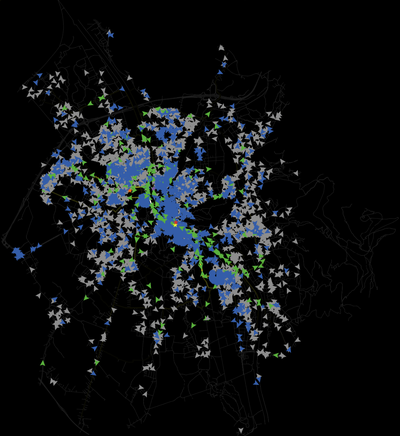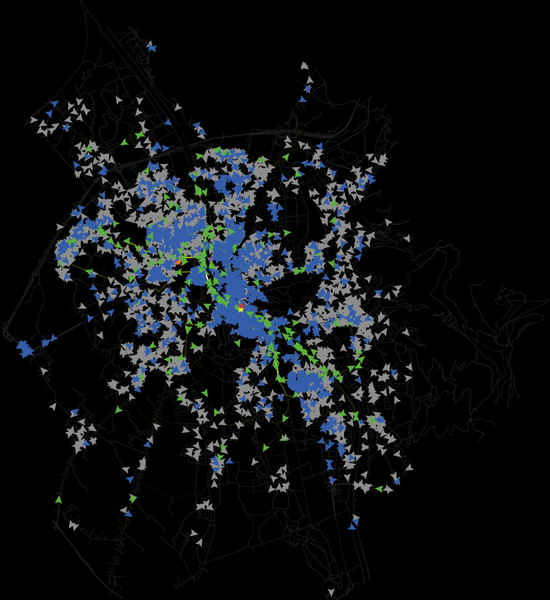Salzburg Bicycle model (1.0.0)
The purpose of the model was to simulate the spatio-temporal distribution of cyclists in the city of Salzburg during a weekday in late spring. The spatial distribution of the cycle trip density across the city’s street network was expected to emerge from the behaviour of individual cyclists. The model was thus intended to be used as a base model to generate and test hypotheses on driving factors of cycle traffic and their implications for traffic management, route preferences, and effects of cycling infrastructure or the identification of accident-prone sites.

Release Notes
final model related to the publication Wallentin & Loidl (2015)
Associated Publications
Wallentin, G. and M. Loidl (2015). “Agent-based bicycle traffic model for Salzburg City.” GI_Forum ‒ Journal for Geographic Information Science 2015(1): 558-566.
Salzburg Bicycle model 1.0.0
The purpose of the model was to simulate the spatio-temporal distribution of cyclists in the city of Salzburg during a weekday in late spring. The spatial distribution of the cycle trip density across the city’s street network was expected to emerge from the behaviour of individual cyclists. The model was thus intended to be used as a base model to generate and test hypotheses on driving factors of cycle traffic and their implications for traffic management, route preferences, and effects of cycling infrastructure or the identification of accident-prone sites.
Release Notes
final model related to the publication Wallentin & Loidl (2015)

